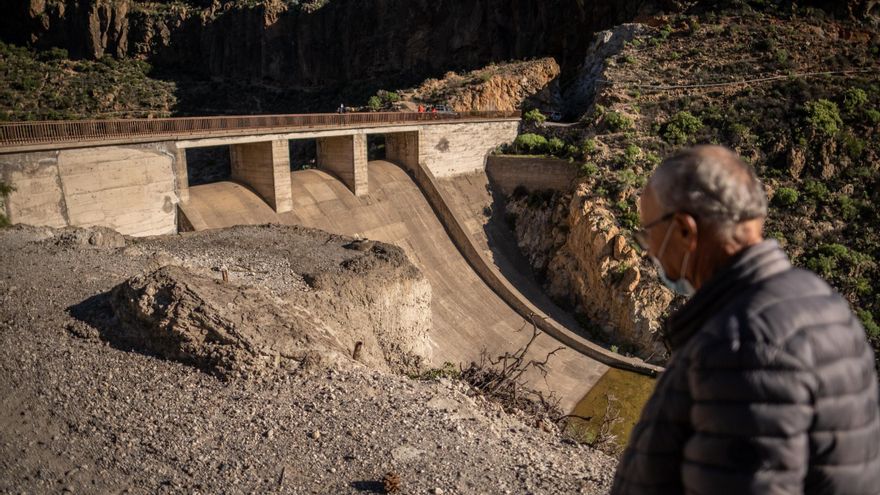
The Insular Government Council approved last week the allocation of 100,000 euros for the examination of regenerated waters in Abona and the utilisation of the El Río dam. This initiative aims to ascertain the feasibility of rehabilitating this infrastructure located in Arico, which is regarded as vital for ensuring the supply of irrigation water for the entire southern region of the island.
Blanca Pérez, an island councillor for the natural environment, sustainability, security, and emergencies, revealed in September 2023 that the Cabildo de Tenerife would be undertaking “a preliminary study of the irrigation system for the Medianías de Arico and Granadilla de Abona area.” Within this context, she highlighted that the study would incorporate “the usage of the El Río dam.”
The development of this feasibility study stemmed from a request made in April 2021 by then-mayors Arturo González (San Miguel de Abona), José Domingo Regalado (Granadilla de Abona), and Sebastián Martín (Arico) to the relevant authorities. Its aim was to establish the technical mechanisms necessary for bringing this resource, which was constructed over fifty years ago but never became operational, into service.
More than fifty years
The El Río dam was designed to exploit the water flowing through the ravine of the same name, which acts as a boundary between Arico and Granadilla de Abona, where eleven basins converge. Situated approximately 600 metres above sea level, its capacity is estimated to be three million water pipes, equivalent to one and a half million cubic metres. It was constructed during the 1960s by the Economic Command of the Canary Islands (MEC), an entity that was established in the archipelago in 1941. However, it was never brought into operation due to incomplete construction, although there was a period when farmers in the area could use the runoff water it collected, until the installed pump was stolen.
A project that faltered
During the previous term, the El Río dam became a topic of discussion and political contention within the Cabildo. The insular government at the time (PSOE-Citizens) opposed its rehabilitation, with the then insular councillor for Agriculture, Livestock, and Fisheries, Javier Parrilla stating, “The El Río dam is impractical; there is no solution as it was poorly constructed. Why would we invest a million euros in fixing something that does not function when we could construct a new reservoir elsewhere?” The main challenge lies in the “gradients and significant filtration issues” that have hindered this project.
The preliminary study must establish whether the waterproofing of the El Río dam is feasible by considering factors such as filtration and project costs, among others. If deemed unviable, the study should explore using the site for rainwater harvesting. Additionally, it must assess the potential for capturing refined water flows from the future reservoir that Arico will have for storage to feed into the existing networks in the region. This would include the network of the Cooperativa de Arico, the mediasty networks of the municipality, the network belonging to the Cocarmen regional cooperative, as well as the individual downspouts of farming operations that require significant amounts of water, among others.
















